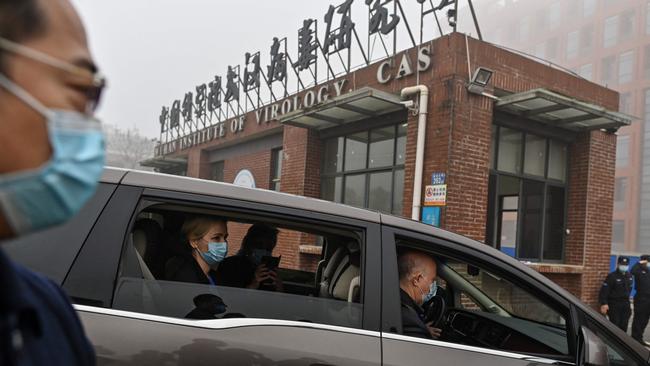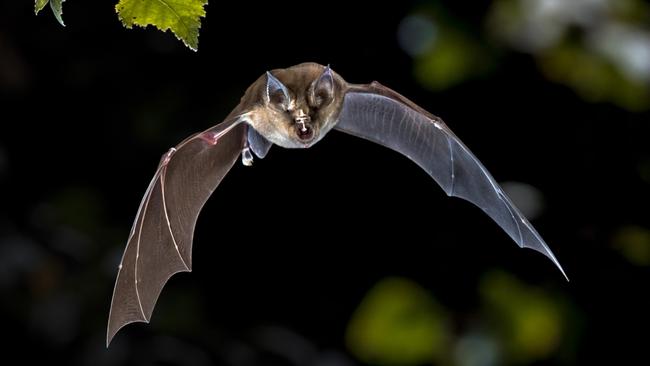Where did the Covid-19 virus really come from?
Details of the research done by a Wuhan lab on viruses closely related to COVID-19, and of the secrecy surrounding it, have grown increasingly hard to dismiss.

The world knows by now the story of the coronavirus: this pathogen that has ripped around the world, killing 2.7m people and counting, leaving devastation in its wake. We are all but certain it came from China. Yet surprisingly, even now, nobody knows how the pandemic began. We were told early on that it started in a Wuhan wet market, possibly via smuggled pangolins, which infected people. Those pangolins had probably caught SARS-CoV-2 from horseshoe bats, which naturally carry such viruses. This was the story initially – and many articles were written on the risks posed by such wet markets.
But what if the virus that causes Covid-19 jumped from animals into people in a different setting – inside a lab? Specifically one where bat viruses were being studied? There have been rumours about this from the start; at first they seemed like conspiracy theories but as the months have worn on, the original theory – of the wet market and pangolins – has become more questionable. Scientists probing the origins of SARS-CoV-2 have uncovered anomaly after anomaly.

As a science writer who has written about viruses on and off for 35 years, and a post-doctoral researcher at a top institute, we initially had little doubt that this would prove to be a natural phenomenon. Mother Nature is a better genetic engineer than human beings will ever be, and the opportunities for viruses to infect human beings are legion, especially where the live-wildlife trade flourishes. Yet now we are not so sure. Evidence for a natural “spillover” of SARS-CoV-2 from animals to humans has not emerged. Nor has evidence for a laboratory accident. But details of the research done by a Wuhan lab on closely related viruses, and of the secrecy surrounding it, have grown increasingly hard to dismiss.
Earlier this year the US State Department released a statement saying it had “reason to believe that several researchers inside the Wuhan Institute of Virology became sick in autumn 2019, before the first identified case of the outbreak, with symptoms consistent with both Covid-19 and common seasonal illnesses”. The institute is China’s top research centre for such diseases and has a database of some 20,000 pathogen samples from wild animals, mostly bats and rodents.
“For more than a year, the Chinese Communist Party has systematically prevented a transparent and thorough investigation of the pandemic’s origin,” the statement added. “The virus could have emerged naturally from human contact with infected animals … Alternatively, a laboratory accident could resemble a natural outbreak if the initial exposure included only a few individuals and was compounded by asymptomatic infection.”
A team of World Health Organisation investigators this year visited Wuhan, on terms set by China. Their recently released report said virus spillover from animals to humans was the most likely scenario. The lab hypothesis was deemed unlikely. In response, the Biden administration has joined the Australian Government and 12 other countries to express their “shared concerns” about the WHO’s report into the coronavirus pandemic’s origins. So where did the virus come from?

In April 2012, six men who had been clearing bat droppings in a disused copper mine in Mojiang county, Yunnan, a province in south-west China, fell ill and were hospitalised. Three of the men would die. In June, Dr Zhong Nanshan, the physician who in 2003 figured out how to treat patients suffering from the first SARS virus – SARS-CoV-1 – was consulted. He thought a similar virus might be responsible, and recommended identifying the bat species in the mine and testing the patients for SARS. Doctors eventually deduced that Dr Zhong had been correct – behind the miners’ illness was a SARS-like coronavirus found in horseshoe bats. Tests were run, some by the Wuhan Institute of Virology (WIV), 1600km to the north-east.
This is where virologist Dr Shi Zhengli works. For years she had conducted field expeditions to sample bats in caves elsewhere in Yunnan for viruses, as part of a long-term project to track down the sources of SARS-like viruses. These expeditions brought the viruses back to Wuhan to be “sequenced” – a technique to determine the order of the genetic letters that make up a genome – and in some cases to be used in animal-infection experiments. After the Mojiang miners fell ill, Dr Shi sent at least seven expeditions to the site to catch and sample bats. They brought back nine SARS-like coronaviruses. Other top Chinese labs also went to sample viruses from the mine.
On December 30, 2019, Dr Shi was at a conference in Shanghai when she heard of an outbreak of infectious pneumonia in her home city of Wuhan. She rushed back on an overnight train. Later, she told Scientific American magazine that one of her early thoughts was: “Could [the coronaviruses suspected to be the culprit] have come from our lab?” She concluded they did not. This new disease seemed to be connected to a Wuhan food market selling exotic wildlife: of 41 cases of people with the disease, 27 had visited the market. Within a month of the Chinese Centre for Disease Control and Prevention announcing the origins of the virus being animals at the market, Chinese researchers reported that they had found a similar virus in smuggled pangolins confiscated in 2019 in Guangdong, a southern province, which was also where the 2003 SARS outbreak started.
The source of the virus therefore seemed clear: pangolins, trafficked into Wuhan, were the culprits that had conveyed the newly named SARS-CoV-2 from bats into humans. By all accounts, this was a rerun of the SARS epidemic, whose origins were traced back to possum-like palm civets in markets and ultimately to horseshoe bats. This was the story told to the world and one that was, initially, widely accepted. In February, however, two Wuhan scientists, Botao Xiao and Lei Xiao, released an article pointing out that Wuhan labs had mounted expeditions across China to collect bat viruses. They boldly stated that “in addition to origins of natural recombination and intermediate host, the killer coronavirus probably originated from a laboratory in Wuhan”. The paper was later withdrawn and some concluded it was an empty guess.
Nevertheless, when sequencing Wuhan’s novel coronavirus, Dr Shi found it closely resembled a bat virus her lab had collected in the Mojiang mine back in 2013. In publishing this finding in Nature magazine in February 2020, however, she made no reference to Mojiang or the miners, and gave the bat virus a different name – RaTG13. Nor did she mention that her lab had sequenced RaTG13 as early as 2017. This lack of transparency meant it was left to a group of online sleuths – including a Russian-Canadian biotech entrepreneur, an anonymous Twitter user known as “The Seeker” and a group going by the name of DRASTIC – to fill the gaps. They found the original identity of RaTG13, connected it to the Mojiang mine, located the site of the mine and unearthed details of what happened to the miners.
These revelations were eventually confirmed by Dr Shi in November 2020 in an addendum to the earlier Nature paper. This also revealed that eight other SARS-like viruses had been collected from bats in the mine, yet it gave no names or genetic data for them. Moreover, WIV’s virus database had been taken offline, ostensibly for security reasons. For some observers, it was just too coincidental that the outbreak of SARS-CoV-2 had begun so close to the WIV, the foremost lab for studying such viruses in the world, which had collected many coronaviruses from 1600km away.

The lack of transparency surrounding the bat-virus projects is one reason the consensus on the origin of the virus has been slowly shifting. Today, a growing number of experts agreed when we put it to them that a lab leak remained a plausible hypothesis to be investigated. Another reason for this shift is that the market no longer appears to be the site where the pandemic began.
Last May, the director of the Chinese Centre for Disease Control and Prevention announced that none of the animal samples from the Wuhan wet market had tested positive for the virus. “The novel coronavirus had existed long before,” he declared. It followed months of speculation that the market was not the site of the spillover from animals to humans. Independent analyses had already shown that some of the earliest patients had no links to the market. Nor did virus sequences from surfaces at the market point to cross-species spillover; they implied that the market cases were human-to-human transmissions.
A further surprise was in store. Scientists scrutinised the evolution of SARS-CoV-1 (the cause of the 2003 SARS epidemic) and SARS-CoV-2 in the early months of their respective outbreaks and found that while the former mutated rapidly in human cases, as the virus adapted to its new host, the latter did not. This implies that the virus causing Covid-19 was already well adapted to infecting humans. There are three possible explanations for this. The first is that the virus had circulated, undetected, in people for months. The second is that the virus was already highly adept at human-to-human transmission, even while it was still in bats or other animals. The third is that it had become adapted in human cells or “humanised” animals (those endowed with a certain human gene) in a lab.
That such viruses circulated in humans in Wuhan seems unlikely. Dr Shi and her colleagues at the WIV have long been sampling people in areas where SARS-like viruses are found in bats. In one 2015 study of hundreds of people tested in Wuhan, none had antibodies against SARS-like viruses. Yet there is little doubt the pandemic began there. There is still no sign of an original animal source of SARS-CoV-2 in Wuhan, or the rest of Hubei province. Horseshoe bats that live in the area have been extensively sampled for viruses for years without SARS-CoV-2-like viruses showing up. Therefore, the strongest connection between such viruses in Yunnan and the human outbreak in Wuhan is the WIV, and the fact that it had collected SARS-like viruses from the Mojiang mine.
But this is circumstantial, not direct evidence. Although SARS leaked from a Beijing lab twice in 2004, infecting 11 people, there have been no public reports of an accident at the WIV. Moreover, RaTG13 is not SARS-CoV-2; there are significant differences between them. This is why full transparency about all the viruses held in the WIV would be helpful. We know from published work that Dr Shi and her colleagues were not only analysing the genomes of viruses, but manipulating them too. This includes creating “chimera” or hybrid viruses (with genes from two different viruses) that were tested on “humanised” mice.
The practice of building chimera coronaviruses, sometimes leaving no trace of manipulation, is not new. Such experiments have been conducted in labs such as the WIV for years, for the purpose of understanding how novel viruses could spill over into humans; the ultimate goal is to create a universal vaccine for all SARS-like viruses. The scientists might find it unbearable if they instead caused a pandemic. But they did not find it unthinkable. In a 2015 article co-authored by Dr Shi, these words appear: “Scientific review panels may deem similar studies building chimeric viruses based on circulating strains too risky to pursue… The potential to prepare for and mitigate future outbreaks must be weighed against the risk of creating more dangerous pathogens.”
Some time in 2019 in Wuhan, a virus appeared that was already adept at infecting human beings and that was related to bat viruses from a long way away. Whether it arrived in the lungs of a traveller from a rural village in Yunnan, or through something that went wrong in a lab, we do not yet know. But tracking down its origins becomes more vital with each passing day.

To join the conversation, please log in. Don't have an account? Register
Join the conversation, you are commenting as Logout